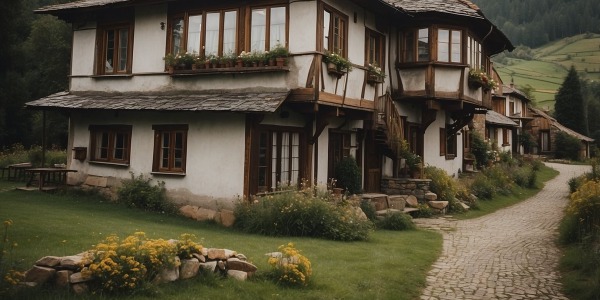12 Fun Flower Facts: Discover the Wonders of Nature's Blooms
Flowers are more than just beautiful decorations; they have amazing stories and facts behind them. You’ll be surprised by how much there is to know about these colorful and fragrant wonders of nature.

Whether you’re a gardener, a nature lover, or just curious, these fascinating flower facts will brighten your day. Get ready to discover some cool and fun facts about flowers!
1. Sunflowers follow the sun

Sunflowers are not just pretty to look at; they also have a neat trick. They can follow the sun across the sky. This process is known as heliotropism.
During the day, young sunflowers face east in the morning. They slowly turn their heads to follow the sun as it moves west.
At night, the flowers return to face east again. They get ready for the next sunrise. This movement helps them grow better. Once they mature, sunflowers usually stop rotating.
Mature sunflowers often stay facing east. This helps them attract more pollinators. In short, sunflowers are special because they can follow the sun to grow strong and healthy.
2. Dandelions are edible flowers

Did you know that dandelions are more than just pesky weeds? They’re actually edible!
You can eat almost every part of a dandelion. The leaves, flowers, and roots are all safe to consume. Many people use dandelion leaves in salads or as greens in cooking. They have a slightly bitter taste, similar to arugula.
Dandelion flowers can be used to make tea, wine, and even jam. These bright yellow blooms add a touch of sweetness to recipes. You can also fry them for a crispy snack.
The roots are often dried and roasted to make a caffeine-free coffee substitute. This drink has a rich, earthy flavor. Dandelion roots are also used in herbal medicines.
So, next time you see dandelions in your yard, consider trying them in your kitchen!
3. Tulips originated from Turkey

Did you know that tulips originally came from Turkey? It’s true! These beautiful flowers were first cultivated by the Turks as early as the 10th century.
The word “tulip” comes from the Turkish word “tülbend,” which means turban. The name was inspired by the flower’s shape, which looks a bit like a turban.
In the 16th century, tulips were brought to Europe, where they became very popular. Today, you can find tulip festivals in many countries, celebrating their beauty and history.
Tulips come in many colors, each with its special meaning. For example, red tulips symbolize true love, while yellow tulips stand for cheerful thoughts.
So next time you see a tulip, remember its journey from Turkey to your garden!
4. The tallest recorded sunflower reached 30 feet

Imagine a sunflower as tall as a three-story building. That’s how tall the tallest recorded sunflower grew. It was an amazing 30 feet high.
This record-breaking sunflower was grown by Hans-Peter Schiffer. It grew in Germany and set the world record in 2014.
Sunflowers are known for their height, but this one was truly special. Normally, sunflowers grow to be about 6 to 10 feet tall. So, 30 feet is extremely rare.
Growing such a tall sunflower takes a lot of care. You need good soil, plenty of water, and lots of sunlight. Hans-Peter Schiffer must have worked really hard to achieve this.
People still talk about this giant sunflower. It shows what can happen when you have perfect conditions and a bit of luck.
5. Roses can live for hundreds of years

Did you know that roses can live for a very long time? Some roses have been around for centuries!
One famous example is the rose bush that grows on a wall of the Hildesheim Cathedral in Germany. This rose bush is believed to be over 1,000 years old!
There are also other roses that have been known to survive and thrive for hundreds of years in old gardens. With the right care and conditions, your roses might even outlive you!
6. The smell of lavender helps with relaxation

Lavender is famous for its calming scent. Many people use lavender essential oil to help them relax. Just a few drops can make a big difference.
You can find lavender in many products, like candles and lotions. These items can help you unwind after a long day.
Some people even put lavender under their pillows. This can help them fall asleep faster and sleep more soundly.
If you’re feeling stressed, try lavender. You might find it helps you feel more at ease.
7. Marigolds can repel pests naturally

Marigolds are not just pretty; they are also useful in gardens. They help keep pests away from other plants.
Their scent is strong and unpleasant to many insects. This makes marigolds perfect for planting near vegetables. They act as a natural bug repellent.
Marigolds can repel aphids, mosquitoes, and even rabbits. You can plant them in your garden beds or in pots near your patio.
Using marigolds to repel pests means you don’t need as many chemicals. This is better for the environment and your garden’s health.
8. Lilies are toxic to cats

Did you know that lilies can be very dangerous for your feline friends? Even a small nibble on a lily can make your cat very sick.
Lilies can cause kidney failure in cats, which can be life-threatening. It’s important to keep these flowers out of your home or garden if you have cats.
If you think your cat has come into contact with lilies, you should contact your vet right away. Keep your home safe by choosing cat-friendly plants.
9. The Titan Arum Flower Smells Like Rotting Flesh

The Titan Arum, also known as the corpse flower, has a very unique smell. When it blooms, it releases an odor that smells a lot like rotting flesh.
This awful smell helps the flower attract pollinators like flies and beetles. They are drawn to the stink, thinking it’s food.
The Titan Arum doesn’t bloom often, and when it does, the smell can be detected from quite a distance. It’s definitely an unforgettable experience if you get the chance to visit one in bloom!
10. Cherry blossoms symbolize renewal

Cherry blossoms are a beautiful sign of spring. They bloom in a burst of pink and white flowers.
You can find cherry blossoms in many countries, but they are especially famous in Japan. There, the cherry blossom season is a big event.
The blooming of cherry blossoms marks the end of winter. It’s a time when people feel hopeful about new beginnings.
In Japanese culture, cherry blossoms remind you that life is precious and always changing. This is why they symbolize renewal and new life.
People often gather to see cherry blossoms together. This tradition is called “hanami,” which means “flower viewing.”
Cherry blossoms don’t last long. They bloom for only a short time, which makes them even more special. You have to enjoy them while they last.
11. Some flowers can change color

Did you know that some flowers can change color? This isn’t magic, but a natural response to their environment.
For example, hydrangeas can turn from blue to pink based on the soil’s pH level. If the soil is acidic, the flowers are blue, while alkaline soil makes them pink.
Another fun example is the morning glory. These flowers can change color throughout the day. They might start out blue in the morning and turn pink or purple by afternoon.
Even some roses can shift hues. Temperature changes or different sunlight levels can make petals look different. This can give your garden a fresh and ever-changing look.
12. Corpse flowers rarely bloom

Corpse flowers are famous for their rare and smelly blooms. These large flowers can take years, sometimes even decades, before they produce their first bloom.
When they do bloom, it’s a short-lived event. The flower only stays open for a few days. This makes each bloom a special occasion for plant lovers.
During this brief time, the flower releases a strong odor, similar to rotting flesh. This smell attracts insects like flies and beetles, which help pollinate the plant.
Seeing a corpse flower bloom is a rare treat. Because of its infrequent blooming, many people will visit botanical gardens just to catch a glimpse.
History of Flowers

Flowers have been around for millions of years and hold a special place in cultures around the world. Let’s explore their evolution and their cultural importance.
Evolution of Flowering Plants
Flowering plants, or angiosperms, first appeared more than 140 million years ago. Before that, Earth was primarily covered in ferns, mosses, and conifer trees. Scientists believe that the first flowers might have been small and not very colorful.
Fossils show that early flowers started to develop bright colors and sweet scents to attract insects for pollination. This helped them spread rapidly. Over time, different flowers adapted unique traits to survive in various environments.
For example, some flowers developed long tubes to partner with specific pollinators like hummingbirds. These adaptations made flowers one of the most diverse plant groups on Earth.
Cultural Significance of Flowers
Flowers have always played a big part in human cultures. In ancient Egypt, lotus flowers were symbols of the sun and creation. The Greeks and Romans used flowers in their myths and celebrations. Roses, for instance, were a symbol of love and beauty.
In Asia, cherry blossoms are celebrated with festivals in Japan and Korea. They represent the beauty and fleeting nature of life. In India, flowers like marigolds are used in religious ceremonies to honor gods and goddesses.
Flowers are also used in art, literature, and even medicine. Lavender, for example, has been used for centuries to help with sleep and relaxation. Different cultures have their own special flowers and meanings, making flowers a universal symbol of beauty and life.
Biology of Flowers

Flowers are not just pretty to look at; they have fascinating structures and play crucial roles in plant reproduction.
Flower Anatomy
Flowers come in many shapes and sizes, but they all have the same basic parts. The petals are often brightly colored to attract pollinators like bees and butterflies. The sepals protect the flower bud before it opens. Inside, the stamen produces pollen, and the pistil receives it. The pistil’s top part is the stigma, which is sticky to catch pollen. Below it, the style leads to the ovary, where seeds develop.
Each part of the flower has a specific job. For example, petals attract pollinators, while stamens and pistils are vital for making seeds. Flowers also have nectaries which produce nectar, a sweet liquid that also draws pollinators.
Pollination Process
Pollination is how flowers reproduce. It starts when pollen from the stamen sticks to the stigma of a pistil. Pollinators like bees play a big role in this process. They move pollen from one flower to another as they collect nectar.
Once the pollen lands on the stigma, it travels down the style to the ovary. There, the pollen fertilizes an ovule. This fertilized ovule will turn into a seed. The flower might also develop into a fruit that protects the seeds and aids in their dispersal.
Different flowers use different methods to spread pollen. Some rely on wind or water, while others depend more on animals. Pollination ensures that plants can produce the next generation of flowers.
Frequently Asked Questions
This section offers specific and interesting facts about flowers, from unusual traits to their roles in nature.
What are some amazing facts about flowers that children would find interesting?
Sunflowers follow the sun throughout the day. They do this through a process called heliotropism. Children might also find it interesting that dandelions are edible.
Can you share some lesser-known, romantic facts about flowers?
Tulips originated from Turkey and were once considered a symbol of romance and love.
What are some intriguing, scary facts about flowers?
Some flowers can be carnivorous, such as the Venus flytrap. These flowers trap and consume insects to get nutrients.
Which flower is known to live for a century and how does it survive?
Roses can live for hundreds of years. The secret to their longevity lies in their ability to adapt to their environment and survive under various conditions.
Could you list five interesting things about flowers not commonly known?
- The tallest recorded sunflower reached 30 feet.
- Some flowers can change color.
- Flowers can communicate with insects.
- Certain flowers glow under UV light.
- There are more than 400,000 types of flowering plants.
How do flowers play an essential role in the ecosystem?
Flowers provide food for pollinators such as bees and butterflies. They also help in the reproduction of plants by spreading pollen.



